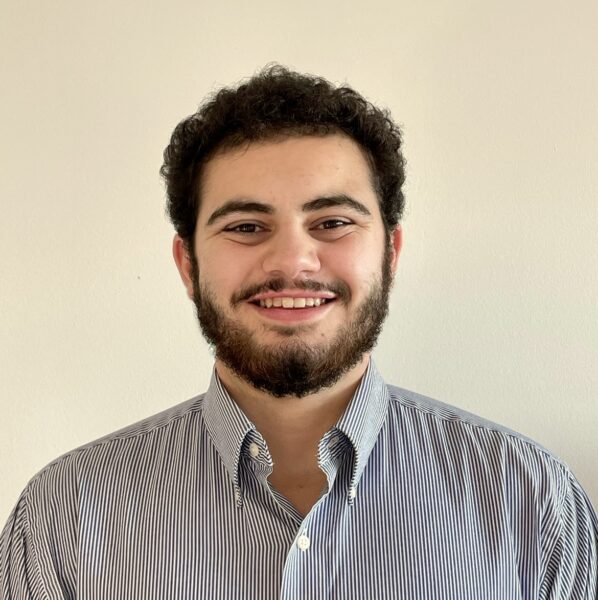Prospective teachers appreciate Educator Shortage Act, some still want improvements

[ad_1]

Maryland lawmakers admit it can take several years, and multiple attempts, from when a bill is introduced until it is passed. But some teachers-in-training pushed to make sure that didn’t happen in this year’s 90-day legislative session.
Part of the work behind Gov. Wes Moore’s Maryland Educator Shortage Reduction Act (House Bill 1219), which goes into effect Saturday, began last year with conversations among Maryland college students at the National Education Association’s Aspiring Educators Conference in Chicago.
Marieme Ndiaye, who attended the annual conference, said she and other education majors spent thousands of dollars on gas, food, clothing and classroom materials while enrolled in unpaid internships. They also must participate in mandatory classroom teaching in their senior year.
And they must pass Praxis tests, which measure knowledge and classroom skills, to become certified teachers.
Ndiaye said she spent nearly $700 because she had to pay at least twice for each test after she didn’t pass on some subjects.

Marieme Ndiaye, a 2023 Bowie State University graduate. Photo courtesy of Marieme Ndiaye.
“My expenses [during senior year] were almost $7,000…that came out of my pocket. Having a paid internship is a big thing,” said Ndiaye, 22, who graduated in May from Bowie State University in Prince George’s County and is scheduled to teach next school year at Cooper Lane Elementary in the county. “This legislation won’t benefit me going forward. It’s just the peace of knowing that the generations after me are going to be okay.”
The Educator Shortage Act provides a $20,000 yearly stipend eligible student teachers to address the state’s teacher shortage. To qualify for the stipend, students must be enrolled in a teacher preparatory program and commit to work two years in a high-needs school in Maryland.
The bill also includes financial assistance for mental health professionals who work in schools for at least two years, allows “eligible” prekindergarten providers to provide teacher preparation programs and requires more diversity in all 24 Maryland public school systems.
It changes eligibility for the Teaching Fellows for Maryland scholarship to no longer require recipients to be Maryland residents or graduates of a Maryland high school.
It requires the Higher Education Commission’s Office of Student Financial Assistance to publicize the financial incentives at the state’s four historically Black colleges and universities (Bowie State, Morgan State, Coppin State and University of Maryland Eastern Shore) and to other students of other color “that are underrepresented in the teaching profession.”
Jailyn Bridgeforth, 21, achieved good grades at Morgan State University in Baltimore, but couldn’t receive a Teaching Fellows scholarship because she’s a resident of Atlanta. She graduated this year with a bachelor’s degree in elementary education and will teach first grade at City Neighbors Charter School in Baltimore when school begins Aug. 28.
Bridgeforth, who also attended the Chicago conference, said her freshmen cohort of more than 30 education majors decreased to nine by her senior year. Some changed their major and a few dropped out of school, she said.
In testimony March 1 before the House Ways and Means Committee, she said that she would prepare to pay $30 for an Uber ride-share after her unpaid teaching internship, but later eat a 32-cent cup of noodles.
“Having an unpaid internship is hard…It makes me feel really excited for aspiring educators, especially knowing that there is not a possibility for [them] to leave school because they can’t afford it anymore, or change their major, or they just can’t afford to do an internship,” she said. “It makes me feel happy to know that hopefully we’re getting more people into the teaching profession and more people into classrooms and learning how to be teachers.”
Del. Vanessa Atterbeary (D-Howard), who chairs the committee, recalled Bridgeforth’s testimony.
“She couldn’t afford to basically live — it was pretty upsetting to me,” Atterbeary said “As a mother raising three African American children, it is important to see children reflect who is [teaching] them.”
The legislation also requires the state Department of Education to create and maintain an educator recruitment, retention and diversity dashboard by Jan. 1, 2025, including demographics and prospective educators participating in internships. A fiscal note estimates it could cost about $500,000 to establish the dashboard and about $75,000 annually to maintain it.
Aspiring educator Cierra Davisson, 20, resides in Cecil County and is a rising senior at Frostburg State University in Allegany County.
Davisson is working this summer at a local Lowe’s and hoping “to save as much money as possible” to take her Praxis tests when she begins her teaching internship later this year.
“I want to be a teacher because every student and every person out there in this world [can] be successful with the right support system,” said Davisson, who also attended the conference in Chicago last year. “There’s still more work to do to make sure we can have more educators.”
‘I will be fighting’
The legislation establishes two types of stipends college students can receive: an initial stipend and an internship stipend.
One begins in the 2023-24 school year and runs through the 2025-26 school year for students in their first or second year at a college or university.
To be eligible for that initial stipend students must attend a school where at least 40% of them receive federal Pell grants in an associate or bachelor’s degree program.
According to a fiscal note, four historically Black colleges and universities and five other schools in Maryland — Garrett College, Hood College, University of Baltimore, Washington Adventist University and Wor-Wic Community College — enrolled that percentage or more of Pell grant recipients in 2019-20.
Del. Eric Ebersole (D-Baltimore), who chairs the House Ways and Means education subcommittee, said this week that Baltimore City Community College and Allegany College also enroll the required percentage of Pell grant students.
He said students at schools that meet the Pell grant threshold but then transfer to a four-year college or university in the state could still receive an initial stipend.
An estimated 300 students could each receive a stipend of up to $3,500. The state’s financial assistance office would determine an exact amount.
“The purpose of the initial stipend…is to nurture in the recipient a passion for becoming a teacher,” according to the legislation.
Atterbeary admitted there was some pushback from officials at Towson University and the University of Maryland College Park, which don’t meet the eligibility threshold.
“That’s not the target audience. I’m trying to get folks at the Eastern Shore. I’m trying to get students at Bowie and Morgan to stay here and teach in our schools,” she said. “So for me, that was the main goal.”
Some current and former college students interviewed disagree.
Davisson said all Maryland schools should be included, or at least permit a school to have the option to accept a stipend. She said she plans to travel to Annapolis next year to urge lawmakers to put that into law.
“I believe every school with a teaching program should have the option to have this stipend for their students,” she said. “I will be there in Annapolis. I will be fighting. I care so much about the people it will affect.”
An internship stipend would begin in the 2026-27 school year and run through 2028-29. According to the fiscal note, about 200 students each could receive stipends of up to $20,000. To get it, students must:
- Be enrolled in a teacher preparation program at an institution of higher education that leads to a state professional teacher’s certificate.
- Participate in an internship or a practicum with a “direct experience working with students in a public school or publicly funded prekindergarten program as part of the recipient’s course of study.”
- Pledge to fulfill a service obligation for two years as a full-time teacher at a high-needs school, grade level, or content area in which there is a shortage of teachers, as identified by the state Department of Education.
The bill also requires the state Higher Education Commission to hire an independent consultant, by July 1, 2028, to evaluate the effectiveness of the act in attracting new teachers. By Jan. 1, 2029, the commission must send a report to the governor and General Assembly.
The stipends are part of a six-year Teacher Development and Retention pilot program scheduled to end June 30, 2029.

University of Maryland student Jay Capitelli. Photo courtesy of Jay Capitelli.
Jay Capitelli, 21, attends the University of Maryland and enrolled in a five-year accelerator program where he would receive a bachelor’s degree in history next year and then a master’s degree in education in 2025.
Capitelli won’t benefit from either stipend, but he’s grateful future educators will.
“Having a paid internship will not only be beneficial for people who want to be teachers, but also people who would want to be interested in the education profession,” he said. “[Internships] are unpaid and it is hard. Having this stipend will allow them to become teachers and will help them along the way.”
[ad_2]
Source link
